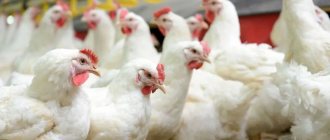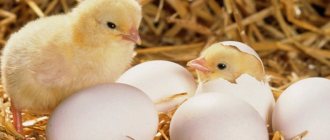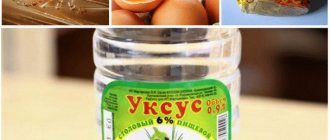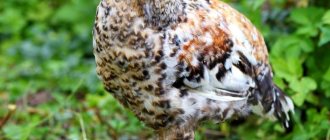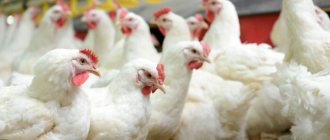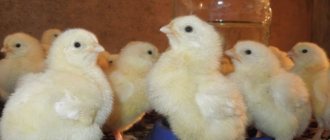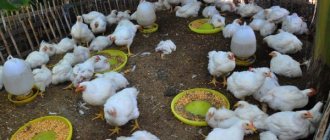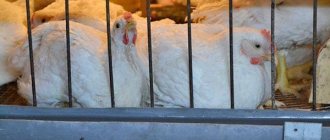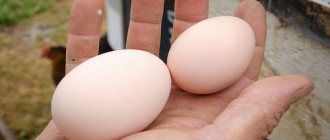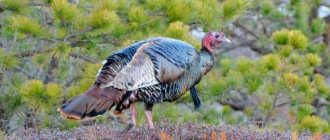Good afternoon The main thing about breeding Cobb-500 broilers in an incubator. In industrial and amateur poultry farming, the priority is the cultivation of broiler chickens. Such meat poultry is recognized as the most profitable. Due to their intensive growth, meat chickens spend little feed per unit of live weight gain.
The obvious advantages of broilers include the fact that they are well compensated by the increase in live weight with local feed, including root and tuber crops, vegetables, kitchen waste, pasture in the form of grass, small animals, for example, worms, bugs, etc.
Thanks to the efforts of domestic and foreign breeders, a wide range of meat poultry crosses is available today. Today, broiler chickens belonging to the Cobb-500 cross are very popular.
However, poultry farmers who reproduce their flocks through artificial incubation must remember that even the best birds will be disappointed by low growth rates, high feed costs and high morbidity due to errors made during breeding of young animals in the incubator.
It will be useful for beginners to know that there are two approaches to the reproduction of birds:
- natural incubation or, in other words, the use of brood hens. For poultry farming, this is not an option;
- artificial incubation - breeding young animals in an incubation apparatus. This is an excellent solution when there is a large flock of birds in the poultry yard;
- purchase of 7-10 day old young animals. The practice of domestic farmers shows that this is also a profitable option for herd reproduction. However, it has one significant drawback - the planting material that arrives on the farm does not adapt well to new conditions. Hence the high percentage of chicken waste.
Here one conclusion suggests itself - in order to achieve high safety of chickens in the first period of the post-embryonic period, it is better to give preference not to hens and purchased young animals, but to chickens hatched in an incubator.
And now directly about our topic - the nuances of breeding chickens of the popular cross Koob-500 in an incubator.
Broiler maintenance
Chicks are born weighing 40 g. After a week, their weight reaches 160 g. They can be used per month. The live weight of the chicken is 1.5 kg. At one and a half months, the weight of an individual with normal development reaches 2.8 kg. Unlike other crosses, Cobb 500 broilers gain weight up to 2.5 months, but they are preferred to be slaughtered at 30-40 days. There is no distinction between cockerels and hens. The birds are kept together: their weight gain is the same.
There is a high survival rate of chickens, 97%. Under good conditions, they rarely get sick, but preventive measures are still carried out for them: they are given vitamins and antibiotics. Cobb 500 poultry meat is of high quality. It is juicy, soft, and is used for quick cooking.
The disadvantage of cross-breeding is that the individuals do not form the parent stock. Parents are not able to pass on the qualities inherent in them to their offspring. Poultry farmers have to purchase chickens from the manufacturer to replenish their stock.
Newborn chicks can withstand temperature conditions. For keeping day-old chicks, +33 C is recommended. From 2 weeks, the temperature begins to decrease. By day 30, the temperature in the cages should not exceed 20 C. If broilers are cold, they eat poorly and stop gaining weight.
Humidity in the poultry house is maintained at 65%. If the indicators are too low, the mucous membranes of the upper respiratory tract begin to become inflamed in the bird, and signs of conjunctivitis are noted. With high humidity there is a risk of developing colds. The poultry house must be ventilated, but drafts should not be allowed. Optimal conditions for keeping livestock can be easily created both in poultry farms and in home chicken coops.
Broiler cages are kept clean. Before each feeding, wash the trays. The drinking bowls are cleaned once every knock. Feeders are disinfected after each serving of mash or dry food. Be sure to monitor the freshness of the air.
In order for broilers to grow well, they need good lighting. Infrared lamps are installed in brooders. They are not only lighting, but also heating devices. The chicks do not turn off the light for 2 weeks. By the month, the length of the day is reduced to 18 hours.
Before moving the livestock into the poultry house, a total disinfection is carried out. At home, the chicken coop is treated with lime, the cages and trays are washed. After use, the herds undergo a technical break of 21 days.
How to choose eggs?
Selection of eggs is an extremely important stage on which the success of the entire process depends. The material is usually purchased from large specialized farms or poultry farms. Eggs should be:
- fresh (no more than 5-6 days), since older specimens will require increased time for incubation, while the hatching rate and the percentage of healthy chicks will sharply decrease;
- without visible flaws (irregularities, cracks, stains, growths, etc.);
- the same size, shape (oval, slightly narrowed at one end) and weight (55-60 g).
If the material is too small, then there is a high probability that the chicks will be sick; if it is too large, then most likely there are two unfertilized yolks. Any deviation from the classical form is also a sign of infertility.
It is necessary to find out from the manufacturer whether the material has been subjected to heating or temperature changes: both factors are extremely unfavorable and can damage the embryo. Unfortunately, it is impossible to verify this, so only a reliable reputation of the breeder can help here.
Breed content
Proper maintenance of birds will promote development according to norms, and will also help prevent many diseases.
Conditions of detention
It is strictly forbidden to keep broilers with the possibility of walking. Optimal floor or cage storage. With the first option, muscle mass gain occurs faster. For 1 sq. m. it is allowed to place about 20 chicks or 10 grown individuals.
Temperature
The second most important condition for proper maintenance is the optimal temperature regime. Broilers require constantly high air temperatures and cannot tolerate hypothermia or sudden temperature changes.
It is also unacceptable to leave drafts in the poultry house. In this case, the room must be equipped with a ventilation system to prevent mustiness and dust.
Ideally, the temperature should be in the range of +27-33°C. At low temperatures, the chickens will crowd together and huddle near the heater. But temperatures above normal will also not bring any benefit - the bird’s appetite will decrease and it will become apathetic. Electric heating pads or infrared lamps can be used to heat the house.
Light mode
From birth to 2 weeks of age, lighting in the poultry house should be around the clock. The fact is that at this time the bird is actively consuming food; in the absence of light, feeding is impossible, which will result in a negative impact on weight gain. After 14 days, you can gradually reduce the duration of daylight hours, bringing it to 18 hours. It is advisable to use red lamps.
Nutrition should be balanced and in sufficient quantities. Be sure to add vitamin and mineral complexes to your diet
It is important to ensure that portions are constantly increased to meet the increasing needs of rapidly growing birds. To avoid mistakes in formulating a diet and save time, you can buy ready-made high-quality feed, the composition of which has already been selected to meet the needs of broiler breeds
These foods are divided into several groups for different ages of birds:
- "Prestart". From the first day of life to 5 days. Up to 15 g of food is required per day per individual.
- "Start". Used at the age of 6-18 days. The daily feed consumption is 25-90 g, depending on age.
- "Fattening." Apply from 19 to 37 days. Daily consumption increases to 100-130 g.
- "Finish." From 38 days before slaughter. At this stage, the daily feed requirement is 160-170 g.
For normal weight gain, you should follow a strict feeding schedule. You also need to provide constant access to clean, warm water. The number of feedings depends on age. In the first week, chickens are given food 8 times, then with each week the number of feedings is reduced by half, gradually bringing them to 4 meals a day. This routine is maintained until slaughter.
Maintaining cleanliness
Maintaining hygiene in the poultry house is another prerequisite for keeping poultry. After selling a batch of broilers, the poultry house must be thoroughly cleaned of droppings, any debris, and bedding. Next, it is treated with disinfectant solutions and ventilated, if necessary, whitened with lime. The premises can be treated with the following preparations:
- "Brovadez-plus." Can be used in the presence of birds. For preventive sanitation, a 0.25% solution is used; for infectious diseases, a 2-3% solution is used. Suitable for treating any surface in the poultry house.
- "Virocide." Can be used in the presence of birds in the poultry house, is safe for people and birds, affects fungi, mold, pathogenic microorganisms and viruses. The drug is used to clean drinking bowls, feeders, and cages.
- "Biodez-R". Destroys fungi and microorganisms. Can be used in the presence of birds indoors. For preventive treatment, a 1% solution is used; for fungal infections and tuberculosis, the concentration is increased to 2-4%.
It is recommended to carry out preventive treatment of poultry houses 2-3 times a month in the presence of birds. Before delivering a new batch of chickens, the empty (!) room can be treated with sulfur dioxide (having previously sealed the house).
Description of the breed
Broilers of the COBB 500 breed were the result of crossing Plymouthrock and Cornish chickens, as well as several outbred domestic black chicks. Visually, these are powerful, large birds with a highly developed muscle corset, convex chest, and strong legs. The plumage is snow-white, the comb and earrings are red, the beak, paws and body color are yellow.
Broilers of this breed have a very calm character and are phlegmatic in temperament. If the conditions of detention are violated, pecking or even cannibalism may begin, but in general such aggressive behavior is not typical for chickens.
Weight characteristics
The main advantage of the breed is the speed of muscle gain and the quality of meat. With relatively low feed costs, chickens grow very quickly and at the age of 35-40 days they can be sent for slaughter. Birds of this breed are characterized by very high uniformity of weight gain
That is, in the same amount of time, chickens of the same age gain more or less the same weight, which is very important for revenue. Growth gain of COBB 500 chickens according to the standard:
- newborns - 40 g;
- 7 days - 150-160 g;
- 2 weeks - 430 g;
- 1 month - 1350-1500 g;
- 1.5 months - 2800 g;
- 2 months - 3 or more kg.
The breed's meat is tender, juicy, best suited for dietary nutrition, and also has an attractive appearance. The skin of the carcasses has a yellow tint.
Advantages and disadvantages
This breed is valued for the following qualities:
- rapid gain of muscle mass, as a result, short feeding and low cost of cultivation;
- relatively strong immunity;
- readiness for slaughter at the age of 30 days;
- chicken survival rate up to 97%;
- homogeneity of individuals of the same age;
- the possibility of growing the breed in large poultry farms and small farms.
This breed is not without its shortcomings. The downside is the impossibility of breeding broilers in the usual, traditional way. Incubated eggs or day-old young animals only need to be purchased from breeders. The fact is that, being a cross breed of chickens, COBB 500 broilers are not able to transmit to their offspring the characteristics obtained from the parent breeds as a result of crossing. In addition, black whales have a very weakly expressed brooding instinct. Another disadvantage is that the breed is heat-loving, so during the growing process a lot of resources are spent on maintaining the desired temperature regime in the poultry house.
Growing Cobb 500 broilers at home
Broilers of the COBB 500 cross are characterized by very fast growth. Upon reaching the age of forty days, the bird is already gaining marketable weight, and therefore this age is considered the most optimal for slaughter.
The average weight of chickens at this stage reaches 2.5 kg. You can, of course, fatten them longer, but you should remember that keeping chickens for more than 80 days does not make sense, since further growth slowdown is observed.
The undoubted advantages of the COBB 500 cross include the following:
- very rapid increase in live weight;
- low cost of the final product, that is, meat;
- presence of large and strong legs;
- excellent feed conversion rates;
- impressive size and excellent white color of the breast;
- very high survival rate.
Origin
To breed COBB 500 broilers, representatives of several meat chicken breeds were used:
- Cornish, obtained in England as a result of crossing Fighting chickens of an old English breed with Malayan and white Azil chickens.
- Plymouth rock, belonging to the mixed meat and egg direction. The birthplace of this breed is the USA.
In addition to these two fundamental breeds, the use of Kuchinsky Jubilee, Pantsirevsky, Rhode Island, New Hampshire, Zagorsky salmon, Pervomaisky and some others was also practiced.
Content Rules
Warm rooms with good ventilation should be used to house chickens. The presence of windows is not at all necessary. From the moment of birth, lighting should be present around the clock for two weeks.
This is explained by the fact that at this stage the chickens experience a constant need for food, and in the dark it is quite difficult for them to find food. After two weeks, daylight hours can be reduced to eighteen hours.
A prerequisite is the cleanliness of the room in which the chickens are kept. Only in this case can you be sure that their development will occur normally.
After all, the presence of dirt leads to the emergence of infectious diseases, which will certainly lead to the death of young animals. Stuffiness is strictly contraindicated for broiler chickens, however, they also do not like drafts.
The room temperature should be maintained between 28 and 33 degrees.
Productivity
When buying Cobb 500 broilers for growing, first of all, pay attention to their productivity.
The most intensive period for the growth of broilers is 20 - 40 days, at this moment it is important to provide it with adequate nutrition
The main indicators for broiler hybrids are the weight of the young at 20-40 days and the rate of weight gain. Cross Cobb 500 weighs approximately 2 kg at 30 days, 2.5 kg at 40 days, and more than 3 kg at 60 days. If you keep the bird for up to 90 days, the carcass will weigh 4.5-5.5 kg. Further rearing is unprofitable; chickens recover slowly, while consuming a standard amount of feed.
For a better understanding of growth characteristics, it is recommended to use the Cobb 500 growth chart:
| Age | Weight (g) | Weight gain per day | Feed conversion | Feed consumption per individual per day | Total feed costs at a given time |
| 40 | |||||
| 10 | 260 | 25 | 0,940 | 40 | 245 |
| 20 | 775 | 40 | 1,235 | 100 | 955 |
| 30 | 1570 | 52 | 1,495 | 170 | 2350 |
| 40 | 2455 | 60 | 1,720 | 200 | 4220 |
| 50 | 3245 | 65 | 1,925 | 205 | 6245 |
| 60 | 3645 | 65 | 2,045 | 200 | 7450 |
Feed conversion is understood as its cost per unit of weight gain. For example, to obtain 1 g of live weight of a 1 month old broiler, you need to spend 1.5 g of feed. The lower the indicator, the more profitable it is to raise poultry and the breeding fully pays for itself.
The weight of the Cobb 500 broiler will increase by day if you keep males and females separately. This can be seen if we compare the norms in birds of different sexes.
Cobb 500 breed growth chart:
| Age | Weight (g) | Weight gain per day | Feed conversion | Feed consumption per individual per day | Total feed costs at a given time |
| 40 | |||||
| 10 | 250/270 | 25/30 | 0,955/0,930 | 38/40 | 240/250 |
| 20 | 740/815 | 40/50 | 1,250/1,215 | 95/105 | 920/990 |
| 30 | 1475/1670 | 50/55 | 1,525/1,465 | 160/175 | 255/2440 |
| 40 | 265/2645 | 55/65 | 1,75/1,655 | 185/210 | 4015/4405 |
| 50 | 2930/3570 | 60/70 | 2,010/1,835 | 185/215 | 5885/6545 |
| 60 | 3235/4055 | 60/75 | 2,155/1,925 | 180/210 | 6975/7810 |
The indicators given in the table may change in each specific case. They largely depend on the feed and growing conditions.
Incubation mode
Incubation of the eggs of the described cross should occur in several stages:
- Choice of material. Eggs should be medium in size, regular in shape, with intact shells, smooth and clean. They also need to be inspected using an ovoscope in order to reject material with defects invisible to the eye.
- Storage. The recommended storage period is three days at a temperature of +18 °C. Humidity level - 85%.
- Preparation for placing in the incubator. The eggs must be heated for 8 hours at a temperature of +22 °C. The incubator is thoroughly washed, disinfected and dried.
- Bookmarking material. The optimal time for laying eggs is in the evening (at 6 p.m.), since the chicks will thus begin to hatch early in the morning, and by the evening the entire brood will be born.
- Actions after bookmarking. From the 1st to the 7th day, the temperature in the incubator should be + 37.8 °C and humidity 55%; from the 8th to the 14th days the temperature remains at the same level, and the humidity decreases slightly - to 45%; from the 15th to the 18th day, keep the temperature at +37.8 °C, and increase the humidity to 50%; from the 19th to the 21st days the temperature is +37.5 °C and the humidity is 65%.
- Turns. You need to turn the eggs in the incubator three to four times a day by 90° (so that the embryo does not stick to the inner shell of the shell). This is also necessary to ensure that the heat is evenly distributed and the oxygen supply process is improved. Three to four days before hatching, turning is stopped.
- Spraying. Humidification of eggs is necessary only when the humidity in the incubator is low. To do this, from the first to the tenth day they are sprayed with a spray bottle to maintain a 30% moisture level; from the eleventh to the eighteenth day, the moisture content of the eggs should reach 70%.
- Ventilation. Eggs are able to “breathe” and emit carbon dioxide, and this can inhibit the development of embryos, therefore, from the 14th day, it is necessary to ventilate the material placed in the incubator for 15 minutes at a temperature of +18...+25 °C.
- Ovoscoping. On the sixth and seventeenth days, it is necessary to examine each egg using an ovoscope to monitor the development of the embryos.
- Chicks coming out. At the moment the chicks hatch, they need to be provided with sufficient air humidity so that they can easily break the shell membrane, so you need to install an additional tray with water in the incubator. Another important aspect is sufficient oxygen. If you follow all these nuances, then the chicks will be comfortable: they will signal this with a calm squeak; if they are cold or experiencing other discomfort, their squeak will be loud and alarming.
Video: Establishment, incubation and hatching of COBB-500
Did you know? Newborn female chicks already have thousands of microscopic eggs, which are undeveloped yolks, which only at the onset of puberty will descend into the fallopian tube for their further development.
Bookmark
Before laying, the eggs are transferred from storage to a room with a temperature of 25-27 degrees and kept here for about eight hours. This is necessary to ensure that the egg has the same temperature over its entire surface.
If the room ventilation is poor, the process may take longer. Therefore, it is recommended to ensure good air ingress. In addition, before laying, pre-incubation heating should be performed for 6-12 hours.
It is better to place broiler eggs for the incubator horizontally or at an angle of 45 degrees. There should be a small distance between them so that they do not overheat. The number of eggs depends on the incubator model; this number must be strictly observed.
Description of the chicken breed COBB-500
COBB-500 chickens come from the Czech Republic, and today their breeding is a priority in many countries where they are in great consumer demand.
The reasons for the popularity of the described chickens lie in the characteristics of their breed:
- these chickens are exclusively meat chickens, have skin of a natural yellow hue, which does not change depending on the consumed (non-pigmented) feed, which is how they differ from other breeds;
- there is rapid growth of chicks with minimal feed consumption;
- Roosters and females at different ages have virtually no differences in weight, size and commercial quality, which makes it possible not to separate carcasses into grades in industrial meat production.
It is possible to conduct a comparative analysis of the described cross with another highly productive ROSS-308, popular among farmers, which also has universal qualities:
- high egg production;
- high hatchability of offspring;
- rapid growth and maturation;
- large muscles.
Important! If roosters and hens are kept separately, a faster weight gain is possible in both sexes.
Appearance
Broilers KOBB-500 have a characteristic appearance:
| Appearance | |
| Head | Medium size, neat, wide forehead, face with reddish skin |
| Crest | Medium, bright red |
| Beak | Powerful, capable of causing serious injury |
| Neck | Medium and strong |
| Breast | Wide, with increased fleshiness, makes up most of the body |
| Stomach | Well developed |
| Wings | Adjacent, small |
| Tail | The male has a medium, curved; the chicken hardly stands out |
| Paws | Big, tall, strong |
| Plumage and color | Dense, thick, exceptionally white |
As the table showed, the external characteristics of the described cross are easily distinguishable from the qualities of chickens of other breeds due to their massive body, high powerful paws and well-developed chest.
It follows from the table that broilers of the specified cross have excellent meat productivity characteristics, but are not suitable as laying hens for production use due to low egg production.
Temperament
Broilers KOBB-500 are distinguished by the following temperament:
- Roosters and hens of the breed are not aggressive, they are quite balanced in everyday life, they do not fight or make noise unnecessarily;
- there is no fear of humans;
- cannibalism may occur due to insufficient feeding or too bright lighting;
- The phlegmatic nature of the birds allows them to be kept without walking in the walking yard, due to which the rate of muscle mass gain increases.
Important! If a broiler chicken develops inflammation of the cloaca or a wound from mechanical damage, its fellow tribesmen are able to peck at this place until its death, so it is very important to pay due attention to sick pets in order to isolate the rest of the population from them in time
Advantages and disadvantages of the breed
- “Five hundredth” chickens have a number of advantages:
- Chickens are suitable for breeding both in poultry farms and in a personal backyard.
- In a fairly short time, a noticeable increase in weight is possible, allowing poultry to be slaughtered from the age of one month.
- The carcasses have an excellent presentation due to the yellow color of the skin.
- Birds are distinguished by rather muscular thighs.
- A small layer of fat.
- Breast with great weight and pleasant taste.
- Low feed costs.
- High survival rate of young animals (95–98%).
- Unpretentious content.
- Reduced susceptibility to chicken diseases.
- Same weight gain in roosters and hens.
- High percentage of carcass yield.
- Low final price of meat products.
- The disadvantages of the breed include:
- They do not tolerate cold, which increases energy costs when kept in harsh climatic zones.
- Self-breeding is difficult due to the hybrid breed.
- Loss of the ability to hatch and raise young.
- Low egg production.
Despite a number of shortcomings of the breed, they are significantly outweighed by the positive qualities, which is highly valued by breeders.
Appearance and temperament of the breed
Thanks to this impressive background, Cobb 500 chickens have become one of the most productive hybrids. They are characterized as follows:
- The birds are large, with a massive body and large (due to developed muscles) chest. The hips are also well developed; The paws are strong and large.
- A sign of the purity of the breed is exclusively white plumage, without marks of a different color. The ridge is small and bright red, as are the exposed areas of skin on the head.
- The beak, paws and skin under the feathers are a pleasant yellow shade.
- Roosters and chickens are almost the same in weight, and their meat is of the same commercial quality.
- Chickens are distinguished by a calm, phlegmatic character; they calmly tolerate the presence of other birds and people during feeding or cleaning.
A close-up look Source pro-kyr.ru
COBB500
The main distinguishing feature of the KOBB-500 cross is the slightly yellowish color of the skin, even if feed was used that does not contain yellow pigment at all. For some reason, this quality is very attractive to buyers of chicken carcasses at the market and in stores.
The plumage of these chickens is mostly white. Broiler chickens of the KOBB-500 breed are characterized by excellent early maturity and at the time of slaughter (40-45 days) weigh approximately 2500 grams.
It is not without reason that chickens of the KOBB-500 cross are popular among poultry farmers, since, as experience shows, they have an almost ideal ratio of growth rate with proportional accumulation of muscle mass. The presence of red and white meat in the carcass is proportional.
The COBB-500 breed is bred for:
- rapid increase in live weight;
- low cost of carcasses;
- high white meat content;
- omnivorous;
- good survival of young animals.
The productivity of KOBB-500 is influenced by housing conditions, quantity and quality composition of feed.
Chicken diseases
Cross Cobb 500 has the advantage of good disease resistance. However, if the conditions in the poultry house are not observed, the following problems are possible:
- Avitaminosis. Occurs if unbalanced feed is used or there is not enough feed. To prevent this situation, it is enough to feed the chickens with special feed and follow the daily norms.
- Aspergillosis. The disease is caused by a fungus and affects the respiratory tract when the contents are disturbed (cold, humidity, dirt). Treatment is carried out by a veterinarian.
- Bronchial pneumonia. Heavy, wheezing breathing can occur as a result of a cold. Treatment requires veterinary care and antibiotics.
- Dyspepsia. Most often it occurs in chickens due to spoiled feed. The bird refuses to eat, the droppings change color and consistency.
- Salmonellosis. A bacterial infection, often caused by food or water. The disease is most dangerous for chickens under two weeks of age; treatment is not always effective.
Hybrid with great potential Source 24aul.ru
Description, characteristics of the breed
Cobb 500 broilers are a hybrid breed, to obtain which representatives of the following chicken breeds were crossed:
- Cornish - obtained by English breeders as a result of crossing Old English fighting chickens with Malayan and white Azil;
- Plymouthrocks obtained by American breeders;
- Kuchino anniversary;
- Rhode Island;
- Zagorsk salmon;
- New Hampshire;
- Pantsirevskikh;
- Pervomayskikh.
The result is a hybrid broiler, which in the shortest possible time (about 40 days) can gain body weight up to 2.5 kg with a minimum amount of feed and other maintenance costs. At this age, birds are most often slaughtered. As a result, at least three batches of Cobb 500 broilers can be raised during the summer season. This indicator is very beneficial for those farmers who breed poultry only in the summer, for example, on their summer cottages.
The characteristic external qualities of these broilers are:
- powerful body build;
- wide chest and back;
- well-developed limbs with powerful muscles, so Cobb 500 broilers are distinguished by great strength;
- the color of the feathers is just boiling white;
- Chickens have a very powerful and strong beak. If these broilers are teased, they use their beaks to cause serious injuries to the offenders;
- small scallops of bright red color.
Both females and males have a calm disposition; even young cockerels do not provoke clashes with other birds in the chicken coop. And although these broilers have great strength and are much larger than representatives of other breeds of chickens, due to their nature, they often suffer from more aggressive individuals. Therefore, it is recommended to keep chickens of this hybrid separately from other inhabitants of the poultry house so that they are not offended.
Representatives of this hybrid are currently the most popular among all varieties of broilers, as they are distinguished by the fastest weight gain in a short time - in just 40 days their weight can reach 2-2.5 kg, and after 2.5 months these broilers can weigh already more than 4 kg. If the hens and cockerels of this hybrid are kept separately, then their weight may be greater - about 5.4 kg.
Separately, the presentation of these broiler carcasses after slaughter should be noted. They have neat shapes and yellow skin color. Other breeds of meat-producing chickens have either bluish or white skin color.
The largest amount of nutritious, low-calorie white meat is found in broiler breast, which is the most prized meat on the market.
The laying hens of this hybrid do not produce eggs, so it is not worth breeding them for egg production. The female can lay eggs every few days. Their weight is much lower than that of egg-laying chickens, but the testicles of broiler hens have an excellent taste. Sexual maturity in female Cobb 500 broilers begins late - after 8 months. But since these individuals reach their maximum weight by 4 months, it makes no sense to keep them until the onset of puberty due to their too low egg production.
Description of the cross Cobb 700
The Cobb-Vantress company is constantly working on developing new productive crosses, their products are famous throughout the world. Old crosses are being replaced by new ones that are more productive. Cobb 700 is superior in productivity to Cobb 500 broilers. The percentage of meat product yield is much higher. Externally, the new cross broilers look the same as their older brothers. The body is of strong constitution, massive muscles. Chickens have a large volume of pectoral muscles. Compared to other parts of the body, they occupy a larger portion. In terms of parameters, the breast is much higher than the parameters of the thigh muscle. The plumage of chickens at the age of two weeks is white. The skin is yellowish in color, which has a positive effect on the presentation of the carcass.
Externally, the bird's face is red; its earlobes and comb are the same color. Cobb 700 cross broilers must meet a certain standard. Chickens with abnormalities are subject to culling. Undesirable parameters include: the presence of colors other than white in the plumage, weight gain by day does not correspond to the norm. During the entire growing period, weakened birds, sick, inferior birds, and also birds that are lagging behind in growth and development should be culled. For the farmer, growing a Cobb 500 or 700 cross will be cost-effective. Since the product yield will cover the cost of feeding during the growing period. When breeding broilers, the following productive breeds of chickens were used: Plymouthrock, Kuchina Jubilee, Cornish, Rhode Island and New Hampshire.
What to feed broilers
To obtain chicken meat, broiler chicks are purchased in a short period of time. A good option would be Cobb 500 broiler chickens. Growing at home gives good results. The nutrition of the livestock is carefully monitored. It is not recommended to use traditional food. The bird develops normally when consuming the combined feed.
The following versions are used in poultry houses:
- “pre-start” – days 1-5; serving size is 15 g;
- “start” – 6-18 days; daily norm 100 g;
- “fattening” – up to 37 days; chickens are given 150 g;
- “finish” – up to 40-45 days; amount of feed 200 g.
The livestock is fed at the same time 8 times a day. Food is also served at night. From 2 weeks the number of feedings is reduced. The chickens are fed 4 times a day per month. This regime is maintained until the end of fattening.
You can make combination mixtures yourself. To do this, it is necessary to create a certain food supply, purchase scales and a mill for grinding grain.
For the pre-launch version use the following recipe:
- take 10 kg of corn, wheat, oats, barley;
- soybean 7.7 kg;
- milk powder 6.6 kg;
- 550 g premix;
- crushed shell – 0.2 g/head.
All ingredients are ground to flour. The chickens are given the mixture in the form of a mash. Boiled water or yogurt is used as a liquid. This feed composition is recommended up to 7 days. A starting version is being prepared for the next period. The ingredients will be the same, but their quantities will be different.
| № | Helpful information |
| 1 | 30 kg corn |
| 2 | 5 kg of wheat and soybeans |
| 3 | 8 kg of flour |
| 4 | 2 kg of feed yeast and meat and bone meal |
| 5 | 3.5 kg fishmeal |
| 6 | 500 g premix |
| 7 | 0.3 g/bird. shells |
All ingredients are ground: medium fraction. It is recommended to use for broilers up to 20 days. They begin to introduce pebbles: 1 g/bird. Choose a stone with a diameter of 2 mm.
For finishing fattening, a coarse mixture is prepared: a crusher is used. The ingredients are 20 kg of corn, 8 kg of wheat and corn. Feed yeast is added 2.2 kg, fish meal 1.3 kg. Meat and bone meal for chickens is 880 g, shells 3 g/bird, chalk 4 g/bird. Be sure to give pebbles.
It is necessary to constantly monitor the appetite of the livestock, the behavior of the birds, and the condition of their plumage. If signs of vitamin deficiency appear, then vitamin supplements, herbal or pine flour, and premixes are introduced into the food. Chickens gain weight well if biological and protein fillers are used. The chickens are weighed.
Normally, they should show the following growth rates:
- up to 10 days – 26 g/day;
- up to 20 days – 39 g;
- up to 30 days – 52 g;
- up to 40 – 61 g;
- up to 50 – 65 years
By the 40th day, the weight of a Cobb 500 broiler chicken should be normal 2456 g. With longer rearing of up to 2 months, the weight of the individual is 3644 g.
Typical beginner mistakes
Often beginners make mistakes in the process of breeding broiler chickens:
- Incorrect placement of the thermometer. If placed close to a vent, it will show a lower temperature. This means that the eggs may overheat. Because of this, chicks may hatch early, but they will be very weak.
- Different temperatures in different parts of the container. Therefore, once a day you need to change the eggs in places: from the center to the edges and vice versa.
- High or low humidity. It is necessary to follow it according to incubation periods.
- Underheating is a common cause of mortality among chickens. They come out later, their navel is not pulled in, their paws are thick, so they cannot stand up.
So, before you start incubating eggs, you need to learn all the intricacies of this process. After all, just one mistake can lead to a weak brood.
